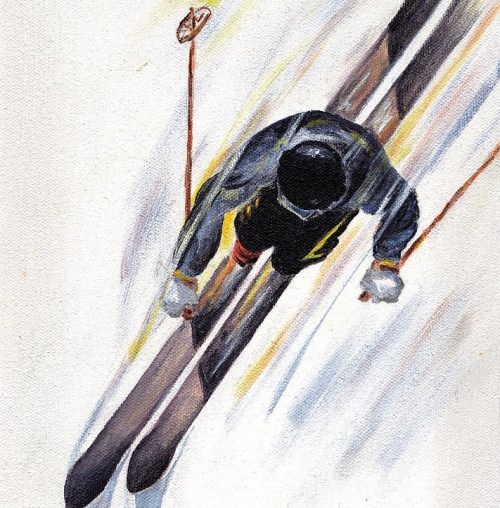Be Careful Where You Ski

By Megan McKinney

Chicago container tycoon Walter Paepcke was simply looking for fresh snow for skiing when he left his Colorado ranch that day in 1945. What he found was a ghost town, a dilapidated but beautiful ghost town that had once been an affluent Victorian community with an opera house, three theaters and 16 hotels, supported by one of the Old West’s most productive silver mines. It was a day that changed his life.

With his skiing plans cancelled, our Chicago tycoon went through the town examining the simple but once lovely 1880s houses, now worn and scruffy, but salvageable. They could be charming again; however, it was the surrounding scenery that took Mr. Paepcke’s breath away and made this the pivotal date of his existence.

The area’s Smuggler Mine was famous in its own right for the 2,060-pound nugget of almost pure silver extracted from a lode in the early 1890’s. While his Aspen predecessors had found life-changing silver strikes in these stunning surroundings, Walter found a beauty, peace and serenity he wanted to sustain, not only for himself but also to share with others.

Before returning to Chicago, Paepcke bought one of the old houses and soon returned to buy or lease most of the other structures. Although he considered demolishing and rebuilding the entire town, Walter became enchanted with its antiquity and ghostly flavor and hired Austrian-born, Bauhaus-trained designer Herbert Bayer to preserve Aspen’s Gay Nineties essence with any existing gingerbread intact.

Bayer, who appears to have been as enthusiastic as Paepcke, settled into one of the other Aspen houses, which he happily bought and did up. His progress on banishing the ghosts from the ghost town began almost immediately.

Along with overhauling lovely houses, an early project was to update and refurbish the old Jerome Hotel. Refurbish, yes, but the updating was intentionally limited.

The hotel’s vintage water-powered elevator was kept, along with ropes that would operate it when pulled by its passengers.

A 1940s postcard of the Jerome shows contemporary automobiles replacing the horse and buggy of the previous photo.
Twenty guest houses, a roller rink, art gallery and a movie theater were added to the town, along with dormitories and a sundeck. The ski slopes were cleared, a chef was brought in from Switzerland and a wine expert from elsewhere. Aspen was soon enlivened by other experts, mechanics, plumbers and ski instructors.

Preparations for the birth—or re-birth—of Aspen required less than two years. In January 1947, Walter Paepcke staged a three-day celebration to bring nation-wide attention to the new resort. Immediately the national media, including publications such as TIME magazine, responded with regular stories about Aspen as it was developing under the guidance of Paepcke and his wife, Elizabeth—or “Pussy”, as she had been known by her family and friends since her toddler days.

Walter’s was not a Horatio Alger story; his father, Hermann Paepcke, who had emigrated from Mecklenburg-Schwerin to Indianola, Texas in 1870, entered the export business in Indianola.

After moving to Chicago in the late 19th century, Hermann established a planing mill and lumber company, then expanded, diversified and began investing in southern timberland. By the turn of the century, he had established mills both to manufacture lumber and to make paper. He then entered the container industry by founding Chicago Packing Box Company.

After Hermann’s death in 1922, Walter took over his business and, in 1926, founded Container Corporation of America, of which he was chairman. Pussy, also from a distinguished family, was considered a great beauty. Her father, William A. Nitze, was chair of the University of Chicago’s Department of Romance Languages and Literatures, and her brother, foreign policy expert Paul Nitze, held U.S Cabinet positions, including Secretary of the Navy and Deputy Secretary of Defense.
By the early 1950’s the Paepckes had founded the Aspen Skiing Company, the Aspen Music Festival and the Aspen Institute of Humanistic Studies, at which some of the country’s most prestigious business leaders and intellectuals gathered for seminars every August.

As active as they were in establishing Aspen, Walter and Pussy remained devoted to Chicago and lived for many years in an apartment in 999 East Lake Shore Drive in the enviable location at the Drive’s curve.

Walter Paepcke died in 1960 at age 63; however, Pussy lived until 1994; she was 91 when she died as the result of a fall in her Aspen home.
Edited by Amanda K. O’Brien
Author Photo: Robert F. Carl







